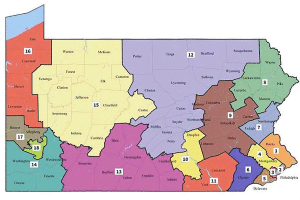By Jim Ellis
![]() Jan. 29, 2019 — In the past couple of days, the new Morning Consult American electorate tracking poll (Jan. 18-22 — 1,996 US registered voters; 35 percent self-identified Democrats, 33 percent Independent, 32 percent Republican) captured media attention because it released a national Democratic presidential primary ballot test.
Jan. 29, 2019 — In the past couple of days, the new Morning Consult American electorate tracking poll (Jan. 18-22 — 1,996 US registered voters; 35 percent self-identified Democrats, 33 percent Independent, 32 percent Republican) captured media attention because it released a national Democratic presidential primary ballot test.
The results concluded that former Vice President Joe Biden is leading Sen. Bernie Sanders 17-12 percent while 19 other candidates or potential candidates all fell into single digits. (Some reports indicated Biden’s edge over Sanders was 26-16 percent, but this was done by eliminating some minor candidates and extrapolating the remaining preference votes among the major candidates. The actual polling results for the entire field are the ones quoted in the first sentence of this paragraph.) But, the figures are largely irrelevant because the ballot test was asked of the whole respondent pool and not just the Democrats and Independents who lean Democratic.
The inclusion of the Republican and Republican-leaning Independents certainly would skew this data, thereby not accurately depicting where the candidates stand among Democrats, and more particularly, Democratic primary voters and likely caucus attenders. This makes the results highly questionable as they relate to where national Democrats are headed in choosing a presidential nominee.
The ballot test, however, was just one query of 82, an extensive segmented questionnaire that, for the most part, provides us interesting and useful issue data.
While President Trump is clearly in what could be the lowest point of his presidency in terms of popularity and job approval – Morning Consult finds him with a 40:57 percent favorable to unfavorable ratio – those highly negative opinions don’t necessarily carry through to other Republicans.




 Jan. 24, 2019 — Now that all but one of the 470 House and Senate races from the election cycle just ended are final and recorded, it is time to better understand what the results portend.
Jan. 24, 2019 — Now that all but one of the 470 House and Senate races from the election cycle just ended are final and recorded, it is time to better understand what the results portend. Jan. 23, 2019 — Though it is only January of the off-year, already early moves are being made in anticipation of an active 2020 US Senate campaign cycle. With 34 in-cycle Senate races on the ballot, as many as 16, at this point, could become competitive in either the primary or general election.
Jan. 23, 2019 — Though it is only January of the off-year, already early moves are being made in anticipation of an active 2020 US Senate campaign cycle. With 34 in-cycle Senate races on the ballot, as many as 16, at this point, could become competitive in either the primary or general election.